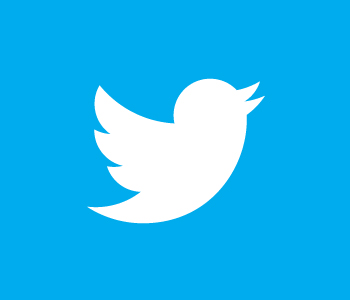The global giants of digital world announced their predictions about 2013 trends!
Approaching the last quarter of 2012; it’s all about 2013. How did 2012; what will happen in 2013, what is the new digital hub etc…?
To us; 2012 was the year of vertical online shopping in Turkey. The integration battles on social media platforms, and digital and social dedicated projects have been seen more than ever as well. Even though there were some interesting developments about mobile; we can easily say that the shining era of mobile was not here yet. Coming soon!
We can’t help but wonder what the global giants of digital world have to say about this. What are their predictions?
We covered a detailed story with the contribution of Fırat Dirik, CEEMEA, Turkish Market Manager at Facebook, Twitter Team, from Fredrik Bernsel, Commercial Director, Partners, EMEA, Marketing Solutions at LinkedIn, and Jonathan Garder, Director of Communications at Vibrant Media, also writer at Mashable, iMedia, eConsultancy, MediaPost, Business Insider. Questions were simple and clean.
- What do you think ‘the’ digital marketing trend for 2012 was/is?
- What will be the digital marketing and social media hubs / trends in 2013?
A quick glance at 2012
The global giants of social media and digital world summarize 2012 as the year of:
– Social media integration battles
– Real-time brands
– Pre – era of mobile
– Video
According to Fırat Dirik, CEEMEA, Turkish Market Manager at Facebook, rapidly growing social networks across both the world and in Turkey have become the most important elements of the digital world, especially in 2012. It was a year in which the brand perspectives on social media changed, the understanding of the power of social media and its value for brands was greater, and marketing strategies underwent serious changes. Parallel to this, brands competed to increase the number of fans they have through taking on more active roles on social media.
Just like Dirik, the Twitter Team thinks the hundreds of millions of people now connected through platforms like Twitter that facilitates real-time communication, the way we live and do business are changing in fundamental and sometimes unexpected ways. “From the Arab Spring of 2011 to the 2012 London Olympics, this real-time era is having a dramatic impact not only on how people communicate and interact, but on the way media organizations and individual people discover, consume, and share information as world events unfold.” They call it “the power of being a real-time brand”.
Fredrik Bernsel, Commercial Director, Partners, EMEA, Marketing Solutions at LinkedIn agreed with them about the social part but he also adds mobile and video as the other 2 big trends in 2012. “LinkedIn has seen its mobile app traffic grow rapidly from 8% in 2011 to over 23% now in 2012 – and that figure grows to 27% if you include access to the site via mobile browsers.”
In a similar vein, Jonathan Gardner, Director of Communications at Vibrant Media, thinks that although every year seems to be declared “the year of mobile” when you see the massive uptake of smart phones, tablets and everything wireless, it’s indisputable that mobile marketing’s day has arrived. “We will see this more clearly in 2013. In 2012 In short, nearly inarguably, it was mobile, and more literally: mobile as part of a cross-platform strategy. As industry expert Mary Meeker has said, mobile ads spending is lagging way behind mobile media consumption” says Gardner and adds: “In 2012 we saw lots of experimentation with mobile and mobile as a component of a broader strategy. Second-screen apps such as Shazam and Viggle started to get a lot of attention and show how the phone can play a role in connecting with and augmenting a broadcast experience.”
“The” trend in 2013: MOBILE
Here are the answers to the question: What will be the digital marketing and social media trends in 2013?”
[heading style=”1″]In 2013 the digital marketing hub will be mobile[/heading]
 Fırat Dirik, CEEMEA, Turkish Market Manager at Facebook
Fırat Dirik, CEEMEA, Turkish Market Manager at Facebook
1. Mobile
Globally, we added 225 million monthly users on mobile over the past year. Half of the Turkish users now connect to Facebook by mobile. Those numbers are growing every day. All of Facebook’s new products are being developed in accordance with these expectations and they are being developed as “mobile first”. Mobile is a platform on which brands can reach their customers momentarily, independent of time or space / location factors. This year brands will invest a lot more in mobile, and the advertising models that allow them to reach the end user via mobile platforms will feature more in their media plans.
Due to the increase of mobile usage, mobile applications and advertising models allowing access to users over mobile will be important. According to Facebook data, 543 million global and 14 million Turkish Facebook users connect to the Facebook platform over a mobile device. In comparison to web users, mobile use is twice as active on the Facebook platform. If we look at web users, over 54 percent of users spend 6 days of the week on Facebook. Following these developments, the ability of brands to reach mobile users directly will become of great value.
2. “Engagement” will be more important
While the efforts to increase the numbers of fans on social platforms continue, products, campaigns, projects and methods / plans that support the formation of the emotional tie between customers and brand ambassadors and that are discussed or can be discussed by the end user on behalf of brand instead of brands will be put forward. Hence “engagement” will become more important and will be amongst the metrics that brands are following closely. Additionally, the fact that brands want to gain an income with their current fans will become evident in methods / plans.
3. “Open graph” integrations
The open graph integrations which began in 2012 will be adopted by more brands in 2013 and the speed of integration will increase.
4. Social TV and social shopping
Social TV and social shopping will also be among the 2013 trends.
[heading style=”1″]B2B Marketing will be more important[/heading]
 Fredrik Bernsel, Commercial Director, Partners, EMEA, Marketing Solutions at LinkedIn
Fredrik Bernsel, Commercial Director, Partners, EMEA, Marketing Solutions at LinkedIn
1. More stronger social media
I believe that two things will happen in 2013. The first is that social media will become even stronger as a marketing channel. The reason is that marketers are right now discovering that it is not only effective as a channel; you can also build long lasting relations with your clients on social media. Things like LinkedIn company pages and groups present an opportunity to engage in a dialogue with future and existing clients, in a way that has never been possible before.
2. Integrated marketing
The second big trend in 2013 will be integrated marketing, meaning strategic and creative campaigns that span over several media: such as social, outdoors, radio and search combined.
3. B2B Marketing in social media
2013 is the year B2B marketing will go massive in social media. So far, a plethora of initiatives has crowded the B2C space, with B2B marketers lagging a bit behind. Businesses are discovering the value of the business networks, word of mouth recommendations, and relationship building to other businesses. 2013 is the year when social and business really meet each other in a powerful way.
[heading style=”1″]New and innovative ad/marketing products targeting the meeting point of mobile and social[/heading]
 Jonathan Gardner, Director of Communications at Vibrant Media
Jonathan Gardner, Director of Communications at Vibrant Media
1. Trends emerge with mobile
In 2013 there will certainly be a much greater surge in mobile.
Better data and analytics and a firmer understanding of what they mean.
New and innovative ad/marketing products from established mobile/social (after all, that’s how they’re used now) platforms such as Foursquare, Twitter and Facebook.
A firmer commitment to “mobile” as a line item/budget bucket (similar to how we have “search” and “display” buckets) with much greater fund allocation among ad agencies. As well, the agency establishment will reaffirm their dominance to PR firms and others who have made inroads into the mobile space.
A better understanding of how to do two not-mutually-exclusive things with mobile:
- Create unique mobile brand experiences for consumers that do not merely try to replicate and reuse what was done on desktop/broadcast; and,
- Unify cross-platform marketing much more tightly and with deeper integration.
Three years ago every marketers’ strategy was to build an app. But that strategy was not working so well. Most apps got used once and then were forgotten about. The competition and difficulty of getting your app discovered in the app store still looms.
Social platforms will continue to seek creative ways to work with brands. More than ever, this will be in a mobile context. But it will go well beyond asking people to “like” an ad. There will be deeper integration with brands and branded content into social media experiences. Expect to see apps, features and content that is sponsored (“brought to you”) by brands that you have – or your friends have – engaged with.
2. Branded content and viewability
Expect to see a huge uptick in branded content or “value adding” advertising experiences on mobile. Great content companies such as Buzzfeed are harnessing consumer interest in viral mobile-ready content and helping brands integrate their messages. There will be a better understanding of the power of contexts (location, immediate interest, etc.) and relevance and all of that which is enabled by mobile – bring that together with great content, brought to you by a smart brand that “gets” the power of mobile – and you have a winning combination. And for advertisers, you need to win for the consumer if you want to win for the brand.
I think the “viewability” challenge that brands faced will be a huge focus and a huge opportunity in 2013. comScore and others have looked at the challenges faced in even getting traditional banner ads seen by consumers. People are focused on content – text, photos, video – so brands need to be paying attention to where consumers are paying attention.
It’s so easy now for people to simply skip over or otherwise ignore advertising. If you want consumers to view your ads, it is going to be on their terms. Lots of research and trends are pointing to 2013 being the year when consumers truly take control of the marketing experience. It’s up to smart brands and marketers to understand and harness this initiative. Respect that people want choice, control and relevance in their experiences and you’ll be the winner.
3. Users data in social platforms
2013 will be the year we finally go “beyond the like.” Facebook, Twitter and Foursquare have realized that they need to make revenue, and have great potential to do so. One option is always to leverage the tremendous and incredibly valuable trove of data they have on hand. Of course, to ensure their users are comfortable and do not feel their privacy has been violated, they have been and will continue to be very careful about how they allow third parties to use your data. In the next year, they will continue to take “baby steps” to allow the use of consumer data, and this will be very powerful for marketers.
[heading style=”1″]2012 was the year of being a Real-Time brand[/heading]
 Twitter Team
Twitter Team
With hundreds of millions of people now connected through a platform like Twitter that facilitates real-time communication, the way we live and do business are changing in fundamental and sometimes unexpected ways.
From the Arab Spring of 2011 to the 2012 London Olympics, this real-time era is having a dramatic impact not only on how people communicate and interact, but on the way media organizations and individual people discover, consume, and share information as world events unfold.
Brands now have the opportunity to join the conversation with consumers and participate in these cultural events by creating engaging content and connecting with consumers in a completely personal way.
2012 for Twitter and our marketing/advertising partners was focusing how to harness the collective conversations happening on Twitter. We call this the power of being a real-time brand.
2012 marks the way brands begin partnering with Twitter to build real-time brands and how “planning for real-time” can inform – and transform – the process through which campaigns are crafted both online and offline.

![Is 2013 Really the Year of Mobile This Time? [REPORT]](https://sosyalmedya.co/wp-content/uploads/2012/09/Report-940x470.jpg)
Yorumlar (0)
Yorum yazabilmek için oturum açmanız gerekir.